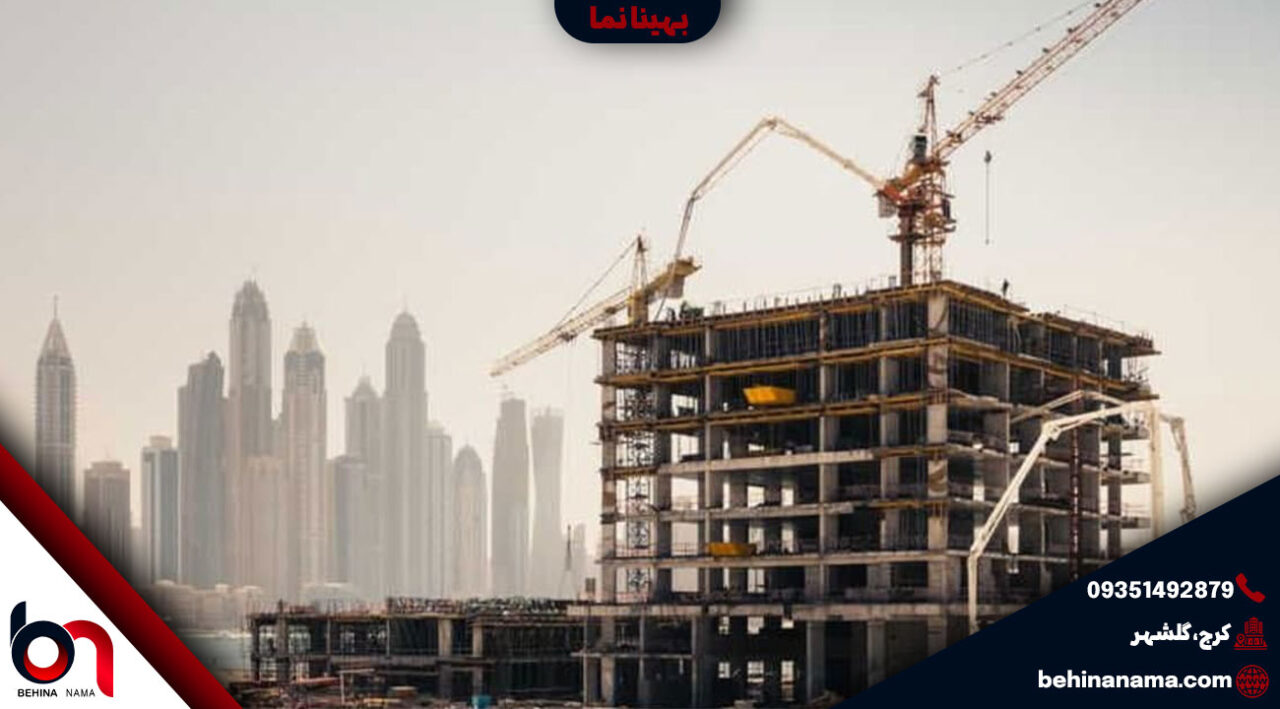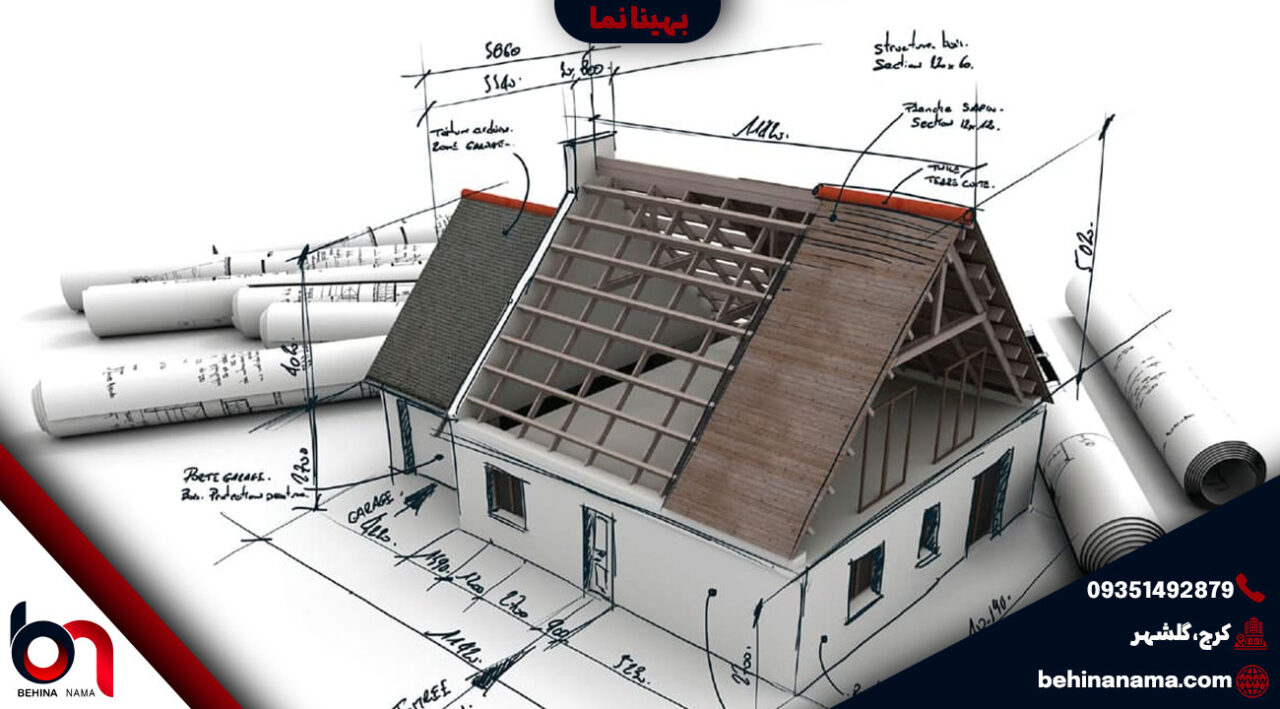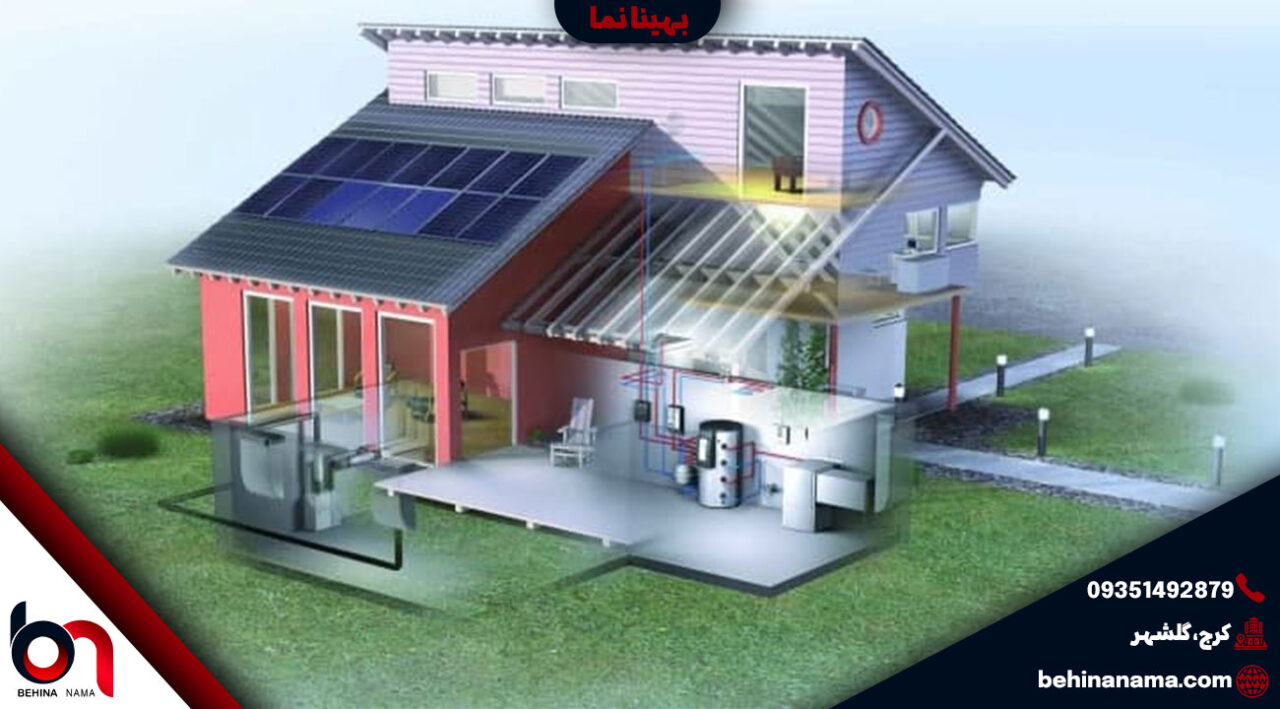Reconstruction of the building facade

Reconstruction of the building facade
A common question for many is what façade reconstruction of our building means and how it can be done.
In order to answer this question, it should be said that reconstructing the building facade essentially involves preserving the exterior appearance of the building against factors such as:
- severe and damaging moisture
- balcony
- substandard materials
Individuals intending to reconstruct their building facade must choose a company that can professionally undertake this task without additional costs.
In this article, we intend to introduce you to top construction companies such as Behina Nama so that you can achieve building facade reconstruction quickly, affordably, and with high quality through them.
Behina Nama Company can professionally handle building facade reconstruction, design repair, or troubleshooting of faulty construction methods.
What is building facade?
The building facade refers to the front of a building that has a distinct structure and is attached to the building itself.
This is especially common in modern architecture.
Where is the facade located on the building?
The word “نما” is originally derived from the Italian word “facciata” and is defined as the exterior or all external aspects of a building.
As mentioned above, this term is often used to refer to the main or front facade of a building.
Types of building facades
Building facades come in various types, such as:
- The above facade style (our suggestion to you).
- Brickwork and stonework.
- Curtain wall
- Pre-cast concrete panels with various finishes.
- Insulated render
- Metal cladding
- Tiles and stone cladding panels
- Large boards consisting of decorative cladding and weatherproofing.
- Glass and steel curtain wall systems.
Reasons for rebuilding a building facade.

Facade renovation
Facade renovation is done for various reasons.
The current worn-out facade can be revitalized through building facade renovation.
Changing the usage and certain parts of the facade are among the reasons that lead you to a fundamental idea for renovating the building facade.
The facade renovation specialists at Behina Nama Company can assist you significantly in this regard.
One of the principles of building beauty is its appearance, as the first thing that appears in a building is its facade or exterior.
Today, various tools are used for designing and constructing building facades, creating a unique appearance with different styles and custom color schemes tailored to your needs.
Alongside modern and lightweight facades, older facades such as brick, concrete, and heavy stone facades require framing and meticulous craftsmanship. These older building facades are constantly exposed to sunlight, cold and heat, snow and rain, and weather-related challenges, leading to deterioration over time.
One of the reasons people are increasingly drawn to modern and lightweight building facades like Behina Nama is that these facades do not deteriorate and are highly resistant to acid rain.
Sometimes facade stones fall for various reasons, which can pose significant dangers.
For this reason, if a problem occurs with the facade of an old stone building, it should be repaired and restored very quickly to prevent accidents.
Hanging stone facade
Sometimes, over time, the mortar or cement under old facades deteriorates, causing the stone or brick facade to separate from the building’s facade.
Even if the stone or brick facade itself is intact, it may still fall due to dust, wind, storms, etc., which is very dangerous.
Because falling stones or bricks from the facade can potentially harm people in the vicinity of the building.
Or it is possible that the detached stones and bricks fall onto vehicles below the building facade, causing damage and posing a risk to individuals.
Typically, in such cases, each stone is anchored to the main structure of the building using screws and plates.
Behina Nama experts have conducted years of research on building facades and experiments in this field, leading to the development of products such as exterior facade tools made from Expanded Polystyrene (EPS) foam and interior tools made from Extruded Polystyrene (XPS) foam, which are very lightweight.
In most cases, due to the aging of the facade, a new facade is replaced with the old one, and for replacing the facade, the best option is Behina Nama’s lightweight facades.
In this case, due to the aging of the facade, the old facade is completely removed, and the stone and brick components are separated. It’s not feasible to install a new facade directly over the old worn-out facade because the materials of the old facade lack the structural integrity needed for supporting new materials (especially if you are using heavy stone or brick facades). By using Behina Nama’s lightweight facades, you don’t need to worry about the heaviness of the materials, structural framing, or meticulous craftsmanship. This lightweight nature allows us to replace the old facade by dismantling it and installing the new lightweight facade accordingly, with appropriate substructures as needed for the chosen new facade type.
When the building facade is in good condition, and you want to change it due to a change in usage or dissatisfaction with the current appearance, the best option is to choose our lightweight products.
You can choose a portion of the facade for building facade renovation and enhance its beauty by combining it with new materials. This choice can be made at a reasonable cost.
Key considerations in building facade renovation.
- Choosing a group of professional experts is more crucial than anything else in building facade renovation; a team capable of delivering a clean and highly durable final product can be very effective in building facade renovation.
- Before taking any action, review and approve your desired plan.
- Before implementing your plan, be sure to obtain approval from the municipality, as they may not accept every facade design.
- Don’t forget to ensure good execution of the work from the executing team.
Renovation of an old building facade
Renovation of an old building facade
One of the reasons to consider renovating an old building facade is the low quality of the current facade. Another reason is the outdated appearance of the building facade.
Owners of old buildings often renovate the facade, making the entire building appear new and up-to-date.
On one hand, the building facade not only belongs to the owner but also plays a significant role in beautifying the city.
Urban planning requires buildings to have beautiful facades.
In renovating an old building, special attention must be paid to the following aspects:
- The architecture of the surroundings and the desired area.
- The building’s usage or function
- The old facade of the building
- The owner’s budget amount
- The structure and skeleton of the building
Each of these elements can play a significant role in the selection and implementation of a new facade.
Benefits of renovating a building facade
The advantage of renovating a building facade is that it is an integral part of the process.
The choice of materials can greatly enhance the aesthetic appeal of a building. When undertaking building facade renovation, the beautification of the building is multiplied several times.
Building facades hold a special place among the general public, and those who prioritize beautifying their surroundings often opt for such facades.
Building facades not only have a private aspect but also a public one. Among the features of renovating building facades, creating diversity in living and working environments, replacing materials with modern ones, and increasing the building’s lifespan are noteworthy. These aspects contribute to preserving the beautiful urban fabric.
The cost of renovating a building facade depends on the type of facade materials used in it.
If simple wall plastering and installation work is carried out, it will certainly be cheaper compared to cases where the previous facade needs to be removed and various parts of it separated.
Renovating the facades of old buildings is one of the most crucial aspects of any structure. A more beautiful facade enhances the aesthetic appeal of the neighborhood and contributes to the attractiveness of the environment for both residents and tourists.
Therefore, there are various facades used in commercial and office buildings, and individuals choose them based on their needs. In general, when a facade becomes worn out, it compromises the structural integrity of the building.
If left unattended, the building may collapse or settle. There are numerous goals for renovating building facades.
Renovating the exterior facade of a building is feasible for various reasons, and these reasons can vary significantly. Examples include renovating the facade due to changing the building’s use, refurbishing an old brick facade due to aging, and updating the facade design to reflect changes in the interior space.
Renovation of a worn-out facade

Renovation of an old facade
As the interior spaces of buildings gradually require repainting and other changes over time, the exterior facade of a building also becomes worn out and changes color and shape due to urban pollutants. In such cases, renovation and reconstruction are natural and necessary measures.
Sometimes, an aging facade can cause the building stones to fall off.
The falling of stones sometimes occurs due to strong winds, earthquakes, or over time as the underlying adhesives weaken and eventually cause the stones to loosen and fall off.
The anchor bolts and plates of the building facade stones gradually lose their strength after about 7 to 8 years and may fall off.
As mentioned above, over time, the building facade, due to natural structural movements and exposure to rain and wind, gradually loses its adhesive properties after its useful life, leading to the detachment of facade stones. . falls, which is also very dangerous.
The falling of facade stones from such heights can cause severe injury or even death to anyone below.
The best time to reinforce, repair, or replace facade stones to prevent them from falling is as follows:
- If the building facade is made of travertine, it should be repaired after 8 years.
- However, if the building facade is made of granite, it should be replaced or repaired every 4 years.
Essential Steps for Renovating a Worn-Out Facade:
- Obtaining permits and coordinating with all building owners
- Obtaining approval from relevant commissions at the municipality regarding building plans and designs.
- Obtaining a permit from the municipality for materials suitable for use in the new facade of the property.
- Obtaining a building repair permit from the municipality and commencing alterations in accordance with the permit and building license.
- Presenting the new plan and distributing it to the electronic service offices of the municipality
A key point regarding the renovation of a worn-out facade
The municipality has established regulations governing the selection of materials and their allowable percentage of use, based on which it issues renovation permits.
The materials used in the building facade must meet standards and comply with local, regional, and national regulations.
Also, in the new renovation regulations, excessive use of glass and aluminum is restricted.
Because these materials waste a lot of energy.
Is the facade of the building private or public?

Renovation
When living in apartments, complexes, or residential towers, you should be familiar with the term “common areas” or “shared spaces.”
Common areas of a building include parts of the apartment or residential towers that are shared among all owners and residents, such as:
the apartment courtyard, the apartment lobby, the building staircases, the building elevator, the apartment’s plants, and so on.
All the aforementioned areas are not owned by any specific individual.
In such a way that all residents of the building can use them and are responsible for them. If these areas encounter any issues throughout the year, all residents of the building must work together to resolve the problem.
The building facade is also considered one of the common elements of an apartment and belongs to all residents.
Therefore, any changes to this part of the building must be made with the consent of all owners.
Since the facade and other common areas of the building belong to all the owners, any decisions regarding changes to these parts, such as installing signs, banners, altering the building’s appearance, painting doors or windows, etc., must be made in consultation with the owners.
Request for repair permits
The question that arises for all building owners is whether they need to request and obtain repair permits from the municipality for building repairs.
According to building renovation laws, not all operations required for renovation or reconstruction of a building need a permit.
However, certain types of renovations and repairs must be approved by the municipality and require obtaining a permit.
Specifically, there is no need to obtain a permit from the municipality for the following actions:
- All actions related to the repair and replacement of the building facade
- Repairs to the roof and attic (such as waterproofing, asphalt, tile installation, etc.)
- Sewage well excavation and drainage
- Repairs related to sanitary facilities
- Construction of a pond or pool, as long as it does not result in the loss of parking spaces.
- Plastering and painting the building.
- All actions related to the repair and replacement of flooring and the basement.
- Installation of air conditioners and radiators
- Plumbing repairs in buildings
- Cement work and whitewashing (bleaching)
- Replacement of doors and windows
- Changes related to the courtyard and building grounds (such as constructing a garden or water feature).
- Repair of building wiring
As mentioned, according to building renovation laws, there is no need to obtain a municipal permit for the above-mentioned actions.
However, the actions mentioned below definitely require a municipal permit.
- Demolition of interior walls and partitions that bear the building’s load, as their removal can reduce the building’s stability.
- Relocation of staircases.
- Relocation of parking walls when it results in the demolition of part of the parking space.
- Movable parts of the building that are prohibited by municipal regulations.
If the aforementioned operations are carried out without obtaining a permit from the municipality, the building will be inspected by a municipal expert. If a violation is found, the owner must pay a fine and, in some cases, cover the cost of demolition.
Certificate of Repairs and Required Documents in Accordance with Building Renovation Regulations
According to building renovation regulations, the necessary documents for obtaining a permit are as follows:
- A copy of the property title
- Original and copy of the ownership deed
- Fire department approval
- Completion of the repair permit application form
- Insurance approval
- Copy of the owner’s ID card or national ID card
If the building is located in a deteriorated area, obtaining a permit from the Cultural Heritage Organization is also necessary.
